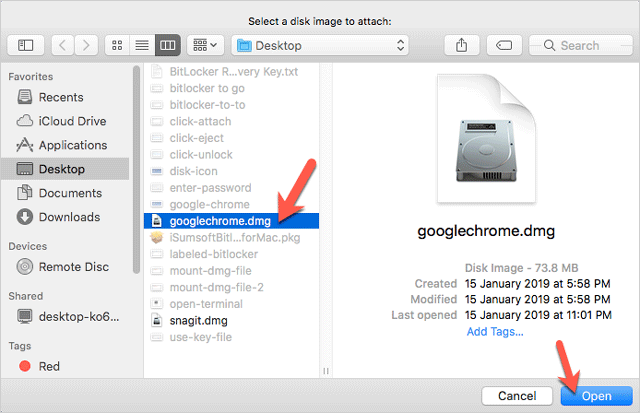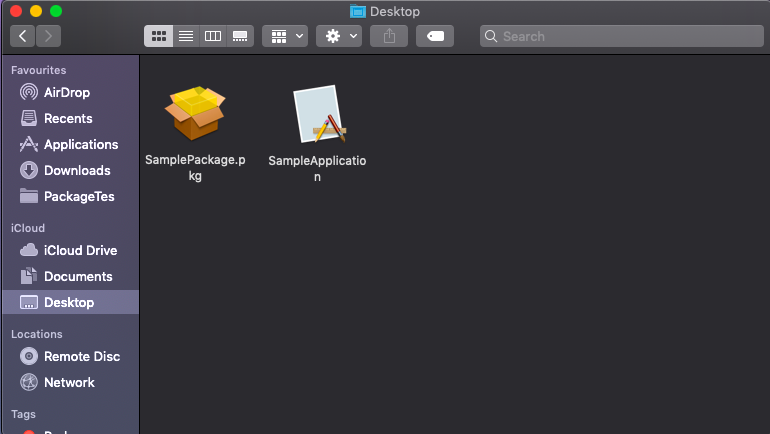- Jan 09, 2010 The.pkg file is created using the PackageMaker of Mac OS for creating the installers. Composer allows you to rebuild an existing package (PKG, DMG, or MPKG) by converting it to a package source. After converting it to a package source, you can make changes to its contents and save a new copy of the package. Open Composer and authenticate locally.
- A.pkg file is basically a folder (if you will) that the installer 'app' is located in. I think you are wanting to burn/run the installer from a disc/USB? (if not, you can run it from the.pkg file itself by double-clicking and mounting the installer. That being said, this is how to locate and save the.dmg file locally. What you want to do is.
- If you’ve installed the package from the AUR, run: darling-dmg SharedSupport.dmg temp 5. Now that SharedSupport.dmg is mounted we need to extract BaseSystem.dmg from it.
- The standard pkg and the seemlingly standard (but not) dmg. The pkg option will build a standard pkg installer file, which will install with any system that can install pkg files. The dmg option will build a standard dmg disk image file, with the payload of the installer as contents. On its own, however, this dmg cannot do anything.
- Pkg To Dmg Converter Online
- Pkg To Dmg Windows
- Installassistant.pkg To Dmg
- Pkg To Dmg
- Pkg Dmg Difference

If you’re running a Linux distro as your daily driver, you can still other distros and OS’. You can even enjoy macOS. You can run Catalina using the clover bootloader and you can even install macOS in a Docker container.
Pkg To Dmg Converter Online
After converting it to a package source, you can make changes to its contents and save a new copy of the package. Open Composer and authenticate locally. Drag the package you want to convert from the Finder to the sidebar in Composer. Jul 16, 2006.dmg is a disk image, and a.pkg is sort of like a zipped file.
Today we’re going to take a look at how set up a simple macOS Big Sur VM in QEMU, accelerated by KVM.
- ALSO READHOW TO: Dual Boot macOS and Linux
- UPDATED TUTORIAL HOW TO: Install macOS Big Sur With OpenCore on Linux
REQUIREMENTS
- A modern Linux distribution
- QEMU > 2.11.1
- A CPU with Intel VT-x / AMD SVM support is required
- A CPU with SSE4.1 support is required for >= macOS Sierra
- A CPU with AVX2 support is required for >= macOS Mojave
- Internet access for the installation process
INSTALL QEMU & OTHER REQUIRED PACKAGES
Open the terminal and run: sudo apt install qemu uml-utilities virt-manager dmg2img git wget libguestfs-tools p7zip
NOTE: Adjust install command and, possibly, packages names according to your distro.
We will need a more packages but they will be installed later, when needed.
INSTALL macOS Big Sur
1. Open terminal and run git clone https://github.com/kholia/OSX-KVM.git macOS-Big-Sur. When you’re done cloning the git, cd into path with cd macOS-Big-Sur
Pkg To Dmg Windows
2. Download macOS Big Sur installer from Apple with ./fetch-macOS.py --big-sur
2.1 If you want to download and install macOS High Sierra, Mojave or Catalina, just run ./fetch-macOS.py and choose which installer you want to download.

Installassistant.pkg To Dmg
NOTE: This tutorial was written during macOS Big Sur’s developer beta stages. When Apple will release macOS Big Sur to the public, you’ll more than likely only have to run step 2.1 and skip steps 3-5 . If there will be any major change, this tutorial will be updated.
3. Install xar. Arch and derivates users can install xar from the AUR. Now we need to extract SharedSupport.dmg from InstallAssistant.pkg.
In the terminal, while in the macOS-Big-Sur folder, run: /path/to/xar-dir/xar/src/xar -xf InstallAssistant.pkg.
If you’ve installed xar from AUR, run: xar -xf InstallAssistant.pkg
4. Install darling-dmg. If you’re running Arch or derivates, you can install the package from the AUR. We will need it to mount SharedSupport.dmg
To do this run: mkdir temp && /path/to/darling-dmg-repo/darling-dmg SharedSupport.dmg temp
If you’ve installed the package from the AUR, run: darling-dmg SharedSupport.dmg temp
5. Now that SharedSupport.dmg is mounted we need to extract BaseSystem.dmg from it. The file we need is located inside a .zip file, so we’ll use 7zip to extract it. To do that, run:
7z e ./temp/com_apple_MobileAsset_MacSoftwareUpdate/*.zip AssetData/Restore/BaseSystem.dmg
6. Next step will be to convert BaseSystem.dmg to BaseSystem.img, an image that QEMU can work with. To convert the image, run: dmg2img BaseSystem.dmg BaseSystem.img
7. Create a virtual HDD image where macOS will be installed. Run qemu-img create -f qcow2 mac_hdd_ng.img 128G
NOTE: You can change the size of the virtual drive. 128 GB is just an example. Also if, for any reason, you want to change the name of the disk image from mac_hdd.img to something else, you’ll also have to update OpenCore-BS.sh to point to the new image name.
8. Lets set up and configure a bridge network connection which can be used by the VM can use to connect to the internet. Required for the installation process. To do this, run:
NOTE: If virbr0 network interface is not present on your system, it may have been deactivated. Try enabling it by using the following commands:
9. Now you’re ready to install macOS Big Sur. In theory. Because the script you need to run in order to install macOS comes preconfigured. So, for a basic install and run of macOS Big Sur, you won’t need to edit anything.
However, it comes preconfigured to use only 3GB or RAM. Let’s take care of that. Edit OpenCore-BS.sh with nano, micro or vim and set it to asign at least 8GB of RAM. More if you can spare it.
Now you can start the installation process. Run ./OpenCore-BS.sh . You’ll be greeted by this screen. Choose macOS Base System

10. First thing you’ll need to do is run Disk Utility and format your virtual drive.
Pkg To Dmg
11. Exit Disk Utility, choose Reinstall macOS and go through the usual installation steps.
12. During the installation process, your virtual machine will restart and will boot back up. When it does, choose macOS Installer to continue the installation.
13. After a loong time of installing, you will eventually be greeted with the welcome screen where you can set up your account and settings.
Don’t expect this to run just like a Mac. It’s a VM afterall. And it will feel sluggish mainly because there’s a lack of hardware acceleration. And this can only be fixed by passing through a graphics card to the VM. To learn how to do that and other tips, check out the official project on Github.
Many macOS applications come in DMG format, which is perfectly fine until you need to deploy one of these applications using your enterprise MDM solution. Most MDMs only work with PKG files so you must convert the application from DMG to PKG before you deploy it.
Many macOS applications come in DMG format, which is perfectly fine until you need to deploy one of these applications using your enterprise MDM solution. Most MDMs only work with PKG files so you must convert the application from DMG to PKG before you deploy it. This post will provide two simple methods I learned while doing my research on how to achieve precisely the desired task.
Apple Disk Image (.dmg, .smi, .img) is a disk image format commonly used by the macOS operating system. When opened, an Apple Disk Image is mounted as a volume within the Macintosh Finder.
A PKG file is a package of compressed installer files used to install a software program. It is commonly used for installing software in Mac OS X and may be installed individually or referenced by an installer script included with the software.
First Method
- Go to the folder that contains the DMG file.
- Double click the dmg file and it gets mounted as a virtual disk and reveal its contents.
- Copy the .app file to the Applications folder in the mac
- Eject the DMG file by clicking on eject button.
- Open Terminal.
- Build the PKG file using the productbuild command (might ask for your password and takes few second to finish running)
Parameters Explained
- component The path to the .app file that will be used during PKG generation.
- path_to_savedpackage/packagename.pkg The destination path for the generated PKG file and desired name.
Pkg Dmg Difference
Second Method
- Go to the folder that contains the DMG file.
- Double click the dmg file and it gets mounted as a virtual disk and reveal its contents.
- Open Terminal
- Build a PKG with the contents of the mounted dmg as a payload using the following command:
Parameters Explained
- /Volumes/DMGName The full path to the mounted DMG file.
- version The application version, make sure to sync this with the version you are trying to deploy (if it’s Zoom 5.6, then this parameter is 5.6).
- identifier The app identifier, if you don’t know the value, follow this guide (The Bundle ID is what you are looking for) to get it.
- install-location The location where the PKG will be installed, leave it as it is.
- Sample-1.0.pkg The full path and name of the PKG file that will be generated, adjust it as needed.